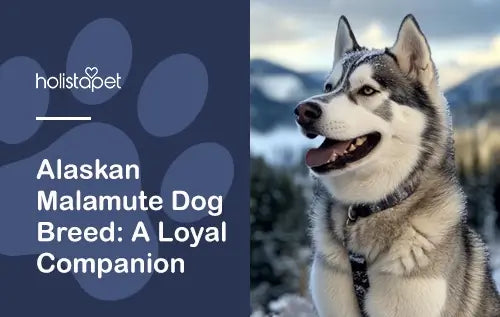How many dog breeds are there? That depends on who you ask. Some organizations recognize around 200, while others list over 350—and the number keeps growing!
From tiny toy breeds to towering working dogs, each breed brings something unique to the table. Some were bred for hunting, others for herding, and some just for companionship. But what makes a breed "official," and why do different organizations have different counts?
In this blog, we’ll break down how dog breeds are classified, which global organizations track them, and why the list keeps expanding.
Defining a Dog Breed

A dog breed considers not only looks but also purpose, personality, and pedigree. Defined by specific traits like size, coat, and behavior, breeds come from generations of selective breeding. You see, dogs were originally bred to serve specific roles alongside humans, from herding sheep to lounging on laps.
Breed standards, created by kennel clubs, outline these traits in detail. For example, the Chihuahua is tiny but feisty, while the Irish Wolfhound towers with gentle grace. Each classification represents a distinct combination of form and function.
What Constitutes a Recognized Breed?
A "recognized breed" is an official status earned through strict guidelines. Recognition means a breed has earned its place in the spotlight.
For a dog group to gain recognition, it must meet specific traits. Think temperament, appearance, and lineage. Kennel clubs document these characteristics in detailed breed criteria.
Recognition also depends on consistency. Dogs of a particular breed must pass generations of controlled breeding to make sure the traits remain stable.
Organizations like the American Kennel Club (AKC) or the World Canine Organization set the rules. They separate experimental breeds from officially accepted ones.
Historical Evolution of Dog Breeds
Dog breeds have evolved alongside humans for thousands of years. Early canines weren’t just companions—they were essential for survival. Hunting dogs helped track and retrieve game, while others guarded homes or herded livestock. Over time, selective breeding refined their traits, shaping the diverse breeds we know today.
Breed development took off during the Victorian era. Breeds like the Beagle and Irish Setter gained recognition, while working dogs, such as sled dogs and scent hounds, kept their specialized roles. This rich history shows that dogs have always been by our side, adapting to our needs every step of the way.
Global Canine Organizations and Their Breed Counts

So, who keeps track of all the dog breeds in the world? That's where global canine organizations come in. These groups set the rules for breed specifications and decide which dogs make the official list.
But here's the fun part: No two organizations agree on the exact number of breeds. Some count fewer types, while others include experimental breeds or new breeds still gaining traction. This makes breed counts a little tricky but highly interesting.
American Kennel Club (AKC) Recognized Breeds
As the largest dog registry in the U.S., the AKC organizes breeds into specific groups based on their characteristics and origins. How many breeds do they currently recognize? Around 200, spanning categories like herding dogs, terriers, and toy dogs.
To earn AKC recognition, a breed must meet strict standards for appearance, temperament, and lineage. Some, like the ever-popular Golden Retriever and Toy Poodle, have been recognized for decades.
Others, like the Staffordshire Bull Terrier, gained recognition after proving their consistency over generations. Breeds still awaiting full acceptance sit in the Miscellaneous Class, hoping to earn their official spot.
Fédération Cynologique Internationale (FCI) Recognized Breeds
The FCI, or World Canine Organization, oversees breed recognition on a global scale. With over 350 recognized breeds across 98 countries, the FCI organizes dogs into 10 groups, covering everything from herding dogs to scent hounds.
Well-established breeds like the Siberian Husky and Shih Tzu have long been part of the registry, but the FCI also includes lesser-known working breeds. The Swiss Mountain Dog and Entlebucher Mountain Dog—both strong, agile breeds from Switzerland—are prime examples. The Basset Hound, known for its droopy ears and exceptional scent-tracking abilities, also holds its place on the FCI list.
By working with national breed clubs, the FCI ensures every recognized breed meets detailed standards while also keeping an eye on emerging and experimental breeds.
United Kennel Club (UKC) Recognized Breeds
The UKC takes a different approach to breed classification, focusing on dogs as working partners rather than just show animals. It currently recognizes over 300 breeds, including well-known favorites like the Labrador Retriever and lesser-known working breeds like the Small Munsterlander.
Unlike other registries, the UKC groups dogs based on function rather than appearance. Herding dogs play a significant role, excelling in livestock management. Cattle dogs, in particular, are recognized for their ability to move herds across rough terrain with precision and intelligence. The UKC also welcomes mixed-breed dogs in performance events, making it one of the most inclusive registries in the canine world.
Factors Influencing Breed Recognition
Not every dog breed gets an official stamp of approval right away. It takes time, consistency, and meeting strict criteria before a breed is formally recognized. Here are some key factors that play a role:
- Stable Traits. A breed must reliably pass down the same traits from one generation to the next. This includes everything from coat type and size to temperament and health. If the breed keeps producing dogs with consistent features, it’s a step closer to official recognition.
- Documented Lineage. A breed needs a solid, traceable history. Kennel clubs require extensive pedigree records to prove a dog’s ancestry and prevent excessive inbreeding. Without clear documentation, a breed might struggle to gain official status.
- Breed Standards. Organizations like the AKC and FCI outline strict guidelines for each breed. These standards describe everything from a dog's ideal weight and coat texture to personality traits and movement. If a breed doesn’t meet a consistent standard, it won’t make the list.
- Popularity and Demand. A breed’s recognition isn’t just about genetics—it also depends on interest. When breeders, clubs, and dog enthusiasts advocate for a breed, it’s more likely to be considered. The more people breed, register, and showcase a dog type, the greater its chances of becoming official.
Criteria for Breed Standardization
Once a breed gains recognition, it must meet strict rules to maintain its official status. These guidelines ensure every dog within the breed looks and behaves as expected. Here’s what organizations look for:
- Appearance. Size, coat type, color, and overall structure must remain consistent across all dogs in the breed. A Labrador Retriever, for example, can’t suddenly start producing fluffy-coated puppies in unexpected colors without raising concerns.
- Temperament. Personality matters just as much as looks! Breeds are evaluated on their natural behaviors, such as whether they are calm, high-energy, independent, or eager to please. This helps maintain the breed’s intended role, whether it's as a working dog or a companion.
- Purpose. Many breeds were originally developed for a job—herding, hunting, guarding, or companionship. Even if a dog no longer works in its original role, the breed standard still considers these traits. A Border Collie, for example, should still show strong herding instincts, even if it’s just rounding up toys at home instead of sheep.
- Health and Lineage. Responsible breeding practices are essential to maintaining a breed’s integrity. Organizations require proof of good genetic health, preventing issues caused by poor breeding habits. This ensures the breed stays strong and healthy for generations to come.
Official recognition is no small feat, and maintaining breed standards is just as important. From appearance to purpose, these guidelines help preserve what makes each breed special!
The Role of Breed Clubs and Associations
Breed associations and clubs are the heart of the dog breed world. These groups help maintain breed guidelines, promote responsible breeding, and provide resources for owners and breeders alike. Without their work, defining and protecting breeds would be nearly impossible.
Clubs, like the National Breed Club for a certain breed, set rules for traits, health, and behavior. They also organize events to showcase breeds, like dog shows or agility competitions. By preserving history and standards, these organizations ensure every officially recognized breed stays true to its roots.
Variations in Breed Numbers Across Regions
The number of dog breeds isn't the same everywhere. Different regions and organizations recognize breeds based on their own rules and standards. While the AKC might list one count, the FCI or other groups might include more.
Local preferences and indigenous breeds also play a role. Some countries highlight regional dog groups that are rarely seen elsewhere, while others might focus on globally popular breeds. This variety means breed counts can change depending on where you look.
Country-Specific Recognitions
Every country has its own way of recognizing dog breeds. National kennel clubs often focus on local breeds while still honoring international standards. For example, the AKC emphasizes varieties popular in the U.S., while European organizations recognize others in their region.
Some breeds, like the Irish Wolfhound, are globally recognized, while others are exclusive to their regions. These indigenous breeds often reflect a country's culture, history, and needs.
Indigenous and Rare Breeds
Indigenous and rare breeds are the hidden gems of the canine world. These breeds often develop in isolated regions, adapting to local climates, jobs, and lifestyles. For example, the Basset Fauve de Bretagne hails from Europe, while other breeds thrive only in their native lands.
Sadly, some of these dogs remain at risk due to low populations or lack of recognition. Dedicated breeders and organizations work hard to preserve their traits and ensure their survival. These unique dogs prove that the world of canines is more diverse and fascinating than many people realize.
The Impact of Crossbreeding and Designer Dogs

Crossbreeding has introduced exciting possibilities. By combining traits from two breeds, breeders create dogs with unique appearances, temperaments, and abilities. These pups, often called "designer dogs," blur the lines between purebreds and hybrids.
While some celebrate their diversity, others question how crossbreeding affects breed integrity. Popular examples include mixes like the Goldendoodle or Labradoodle, which combine intelligence with allergy-friendly coats.
Distinguishing Between Purebreds and Hybrids
The difference between purebred dogs and hybrids comes down to lineage. Whether pure or mixed, every dog brings something special to the table.
Purebred dogs have a well-documented ancestry and meet strict breed standards set by kennel organizations. Breeds like the Golden Retriever or Yorkshire Terrier consistently pass down specific traits, such as temperament, coat type, and size, across generations. This predictability makes them a top choice for those looking for certain characteristics in a pet or working dog.
Hybrids, or mixed-breed dogs, combine two purebred dogs to create something new. Breeds like the Labradoodle (a Poodle and Labrador mix) inherit traits from both parents but don't yet meet the requirements for official recognition. While hybrids can be fantastic companions, their traits can vary more widely than those of established breeds.
Popular Designer Dog Breeds
Designer dogs have taken the world by storm. These dogs often bring out the best of two breeds, making them popular choices. Here are some well-loved designer dog breeds:
- Goldendoodle. Half Golden Retriever, half Poodle, and all heart. These lovable fluffballs are smart, affectionate, and a great choice for allergy sufferers with their low-shedding coats.
- Labradoodle. A Labrador Retriever-Poodle combo with energy to spare. Smart, affectionate, and playful, they’re perfect for active households and always ready for an adventure.
- Cavapoo. A Cavalier King Charles Spaniel-Poodle mix that’s small but packed with personality. These cuddly pups are gentle, affectionate, and happy to snuggle up any time of the day.
- Morkie. A tiny, spunky mix of a Yorkshire Terrier and a Maltese. These little charmers love attention, have big personalities, and thrive in smaller spaces.
Each of these designer dogs has its own unique traits, from playful energy to snuggle-ready affection. Looking for a fluffy adventure buddy? A lapdog with a little sass? There’s a designer breed for every kind of dog lover!
The Future of Dog Breed Classification
As breeding practices evolve and new discoveries are made, the list of recognized dog breeds will only continue to grow. Advances in genetics, changes in roles for dogs, and growing interest in new breeds all shape how canines get classified.
As experts focus on creating dogs suited for modern lifestyles, we'll likely see more experimental types gain recognition. At the same time, efforts to protect rare and indigenous breeds will continue, preserving their place in history.
Emerging Breeds and Genetic Research
The creation of new breeds often begins with scientific advancements. Modern genetic research helps specialists refine traits like size, coat type, and temperament. This paves the way for emerging varieties of dogs that meet both functional needs and family-friendly demands.
Some experimental types gain attention for their unique traits, while others remain works in progress. As science evolves, researchers can better understand canine genetics. This innovation keeps dog types ever-expanding and exciting.
Preservation of Rare and Ancient Breeds
Rare and ancient breeds hold a special place in canine history. These dogs often carry traits passed down for centuries. They're like living treasures! Unfortunately, many face the risk of decline due to low populations or limited awareness.
Dedicated breed preservationists and associations work tirelessly to protect these dogs. By promoting responsible breeding and raising awareness, they ensure rare dogs and other regional treasures don't disappear. Preserving these dogs keeps their legacy alive for future generations to enjoy and appreciate.
Final thoughts: How Many Dog Breeds Are There?
The dog world is as diverse as it is fascinating. From ancient lineages to emerging breeds, each type of dog carries a unique story, purpose, and charm. Dogs have evolved to match human needs and lifestyles, from herding cattle to pulling sleds and simply lounging on a couch.
Global organizations, local enthusiasts, and ongoing research continue to shape the future of our canine friends. With over 350 recognized breeds (and counting), there's a perfect companion for everyone. Understanding this incredible variety reminds us why dogs will always hold a special place in our hearts.
Whatever breed you favor or choose their health and wellbeing are top priority. Here at Holistapet, we offer high-quality, all natural supplements to keep dogs happy and thriving. From dog multivitamins to probiotics, we have a range of products to promote canine health. We also offer premium CBD options for dogs to promote physical comfort and a calm state of mind. Check out all our dog products here!







![Probiotics For Dogs [Soft Chews] - HolistaPet](http://www.holistapet.com/cdn/shop/files/Probiotic-Infographic-1_472d7a29-e30c-435a-9638-1365d8c3a9f9.jpg?v=1725384841&width=104)



























Leave a comment
All comments are moderated before being published.
This site is protected by hCaptcha and the hCaptcha Privacy Policy and Terms of Service apply.